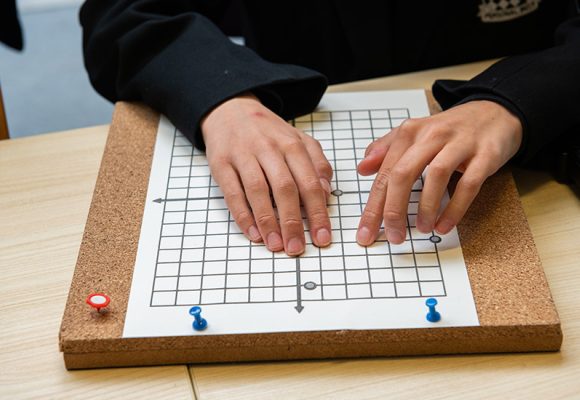Area 2: Sensory Development


Working with children and young people to maximise use and development of the senses.
This area of the CFVI recognises the importance of working with the child/young person and family to maximise the use and development of the senses. This will promote access and inclusion, by developing the sensory strategy that suits them best as early as possible whilst continuing to develop the effective use of other senses. This input and support will be informed by the nature and severity of the vision impairment, if it was from birth or later onset or if the condition is degenerative, and whether there are other physical or learning needs. This may involve specialist qualified professionals collaborating with other professionals, such as occupational therapists.
For more information regarding this element of the framework, please download the Curriculum Framework for Children and Young People with Vision Impairment (CFVI) and accompanying guidance.
Examples of targeted intervention approaches
- Tactile/haptic perception and development.
- Fine and gross motor skills.
- Engaging with surroundings.
- Vestibular development – sense of balance, head/eye-coordination, visual scanning.
- Proprioceptive and kinaesthetic development - sense of movement (sense the position of our body when moving through space, as well as to describe the movement of individual body parts in relation to one another).
- Olfactory development – sense of smell (e.g. smells to support sensory stories/identify food; identify danger such as smoke).
- Using vision effectively.
- Visual stimulation / visual development.
- Auditory skills: listening skills, hearing and making sense of what is heard, being able to listen to audio at increasing speeds to support learning.
- Managing sensory overload, reducing sensory stimulation, working with tactile selectiveness.
Use of resources in practice
When using resources signposted via or downloaded from RNIB Bookshare, consideration should be given to any health and safety risks that might be involved and it is the responsibility of the user of these resources to undertake an appropriate risk assessment where applicable. RNIB assumes no responsibility or liability to the extent permitted by law for any injury, loss or damage incurred as a result of any use or reliance upon the information and material contained within or downloaded from RNIB Bookshare.


